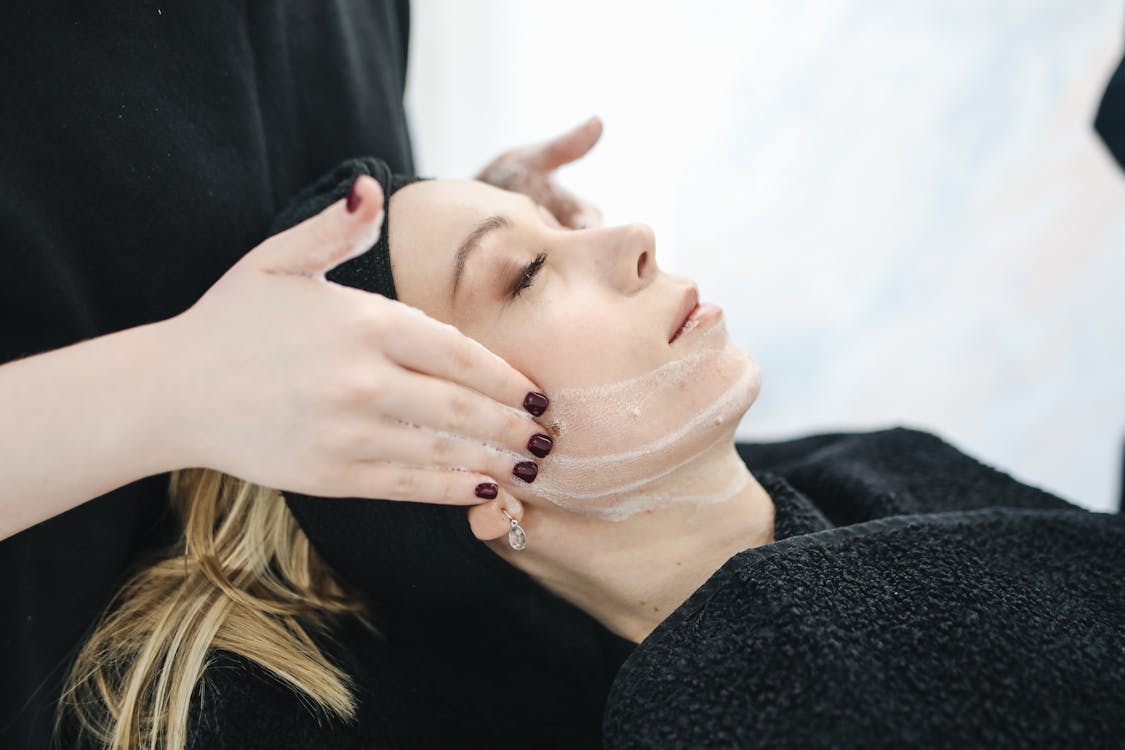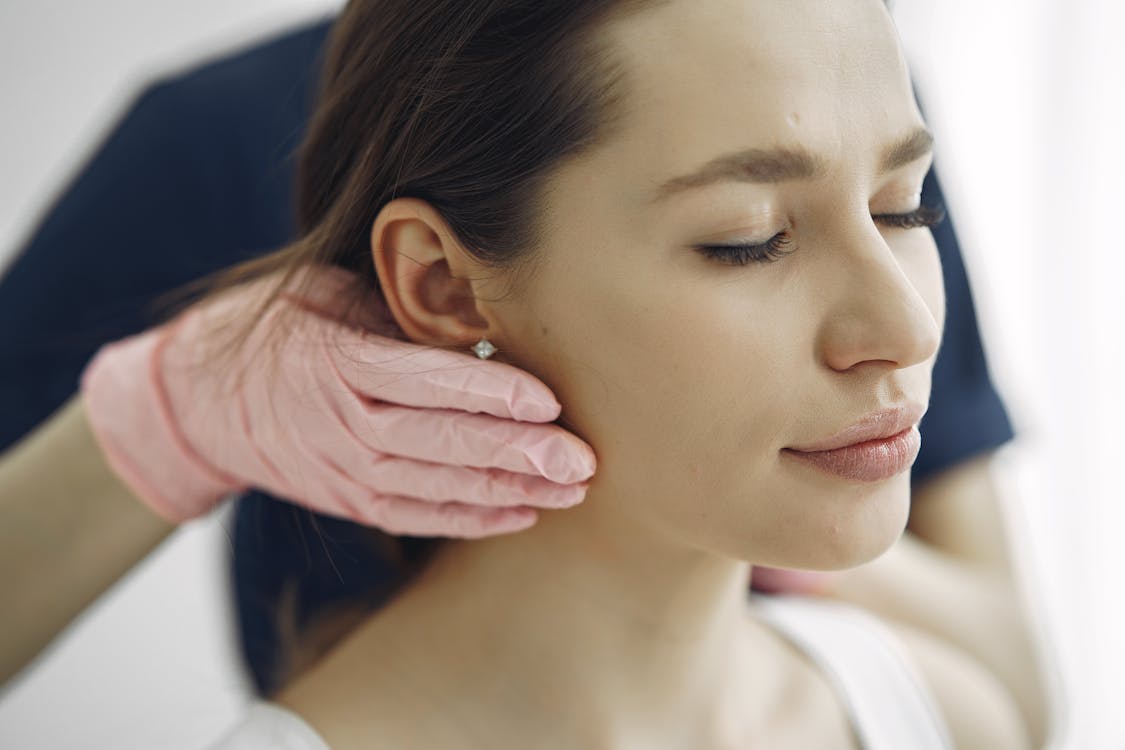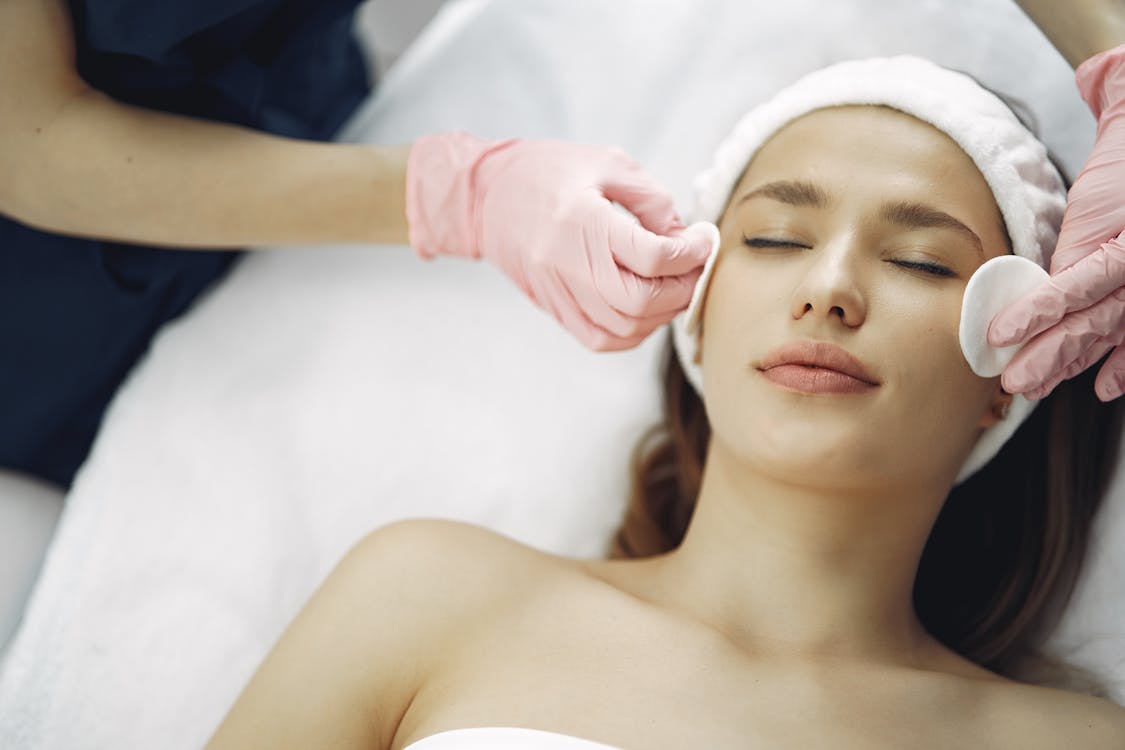A chemical peel is a cosmetic procedure, that, as the name implies, uses a chemical solution to remove the top layers of your skin. The result is fresher, more youthful appearing skin. A chemical peel is a good choice if you are trying to reduce the appearance of wrinkles and fine lines, as well as age spots, uneven skin tone, and other discoloration. The chemicals used for the treatment vary depending on how many layers of skin you want to target, as well as the specific skin condition you want to treat.
What is a Chemical Peel?

The main purpose of a chemical peel is to improve the texture and appearance of your skin. The procedure is sometimes called dermapeeling or chemexfoliation. When the chemicals are applied to your skin, they cause damage to the top layers, which then peel off as a result. The skin underneath looks younger and more radiant.
How Do I Know I Need a Chemical Peel?
There are several conditions that make you a good candidate for a facial peel. They are most often used to treat the skin on your face and neck, but can also be performed on your hands, which often show signs of aging, including dark spots and wrinkles. If you are struggling with any of the following skin conditions, professional peels may the solution you’re looking for.
- Fine lines on your face
- Acne
- Rough or scaly skin
- Dull complexion
- Uneven skin color, including age spots, sun spots and freckles
- Minor scarring
- Melasma due to birth control or pregnancy
Depending on what you want to treat and how deep you want to penetrate, your dermatologist can help you decide which type of peel is best for your needs. A chemical peel isn’t right for deep wrinkles or major scarring.
Skin Types and Chemical Peels
Superficial peels are appropriate for any skin type and only penetrate the very top layers of the skin and removing the dead skin cells on the surface. This type of mild peel can cause discoloration, especially in patients with darker skin tones. This is something to keep in mind, though there are alternate treatments if this is a side effect that concerns you.
In general, you should avoid undergoing a chemical peel if you suffer from any of the following skin issues.
- Scarring on your skin
- Hyperpigmentation, particularly in scarring
- Sensitive skin, including due to medications
- Are unable to avoid sun exposure during the recovery period
What Can I Expect During the Procedure?

A peel is done on an outpatient basis and is most often performed in a dermatologist’s office. The first step is to cleanse the skin, removing any oils and impurities. Be sure you have eye protection during the procedure, starting with the cleansing step. Your dermatologist should have a method for doing this.
Next, the chemical peel solution is applied to your skin. You may notice a warming or stinging sensation, but a cool compress can often alleviate some of the discomfort. The type of chemicals used may vary depending on your needs, but you can likely expect one or more of the following to be included in the mixture.
- Glycolic acid
- Hydroxy acid
- Trichloroacetic acid
- Salicylic acid
- Lactic acid
- Carbolic acid
- Citric acid
- Alpha-hydroxy acids
When used appropriately, these chemicals deliberately cause injury or trauma to the skin. which triggers the healing response and stimulates cell turnover, encouraging new cell growth. They each penetrate the layers of your skin, which later sloughs off and reveals the clean, bright, new skin underneath. The depth of the peel depends on your goals. The solution is washed off your skin after the set treatment time.
A light peel, sometimes called a lunchtime peel, is usually done more than once as part of a series of treatments. It removes the outermost layers of the skin and is an ideal choice for fine lines and some types of acne. This type of chemical peel is also a good choice for patients with dry skin, uneven skin tone and skin that has been damaged by the sun.
A medium peel smooths the skin and is the perfect choice if you have moderate discoloring, such as age spots or sun spots, and if you have acne scarring. Of course, it’s also going to be a great choice for treating fine lines and wrinkles that come with age. Because a medium-depth peel penetrates deeper, you can expect about a week of recovery time as the layers of your skin peel off.
Finally, a deep peel is the solution if you want the most significant results. This type of chemical peel reaches the lower middle layer of your skin and requires more downtime than a light or medium peel. A deeper peel is a good option if you suffer from more pronounced wrinkles or lines, you have sun damage on your skin or you suffer from actinic keratosis. It’s also ideal for deeper acne scarring and discoloration on your skin. In some instances, you will be put under general anesthesia during a deep peel, which means you will sleep through it.
Work with your skincare professional to determine which type of peel is the best for your skin type and skin needs. That way you can be sure to get the results you want.
Preparing for a Chemical Peel

Proper preparation before undergoing your procedure ensures that you get the best results. You will need to avoid tanning beds and direct sun exposure in the two weeks leading up to your appointment. You may need to apply specialized skincare products, such as hydroquinone) to prime the skin for the chemical application. Make sure that any products you use leading up to the treatment are free of retinoids.
In some cases, you may be advised to take prescription antibiotics or antiviral medications. If this is the case, be sure you take them as directed at least 24 hours before your appointment. If you have any skin injuries, lesions, infections or open sores, the chemical peel will need to be postponed until the area heals.
What are Complications That Can Occur with a Peel?
As with any cosmetic procedure, there are some risks to keep in mind. The most common complication experienced with a chemical peel is discoloration. Your risk is higher if you have a genetic history of discoloration, you are taking birth control pills or you are pregnant. If you are pregnant, talk to your doctor before scheduling a chemical peel. It might be best to wait until after delivery.
Another complication to be aware of is scarring. If you are prone to scarring, your risk is higher. The risk is also more common in certain parts of the face. The good news is that if you do experience post-peel scarring, it is usually mild and can be treated.
For patients who have experienced herpes outbreaks in the past, a sore can be reactivated as a result of a chemical peel. Medication can reduce the risk and must be prescribed by your doctor. Be sure to follow dosage directions closely to prevent a flare-up.
If you have ever experienced keloids, a type of scarring, be sure to let your dermatologist know. You should also let him or her know if you have ever undergone X-rays of the face.
Finally, there is a small risk of infection after a chemical peel. The risk is low and this complication is rare, but it’s important to know that it’s possible. If you notice any symptoms of an infection after your chemical peel, let your doctor know right away so it can be treated appropriately.
After the Peel

The recovery period and what you can expect depends on the depth of your peel. For light chemical peels, you may look and feel like you have a sunburn in the treated area. You may experience redness and peeling in the days following the peel. Apply cream to the area, as instructed by your doctor. After seven days, always wear sunscreen (which you should be doing anyway). Makeup can be applied a day or two after the peel and you can expect to repeat a light peel two to five weeks later to enhance the results.
If you had a medium peel, you may notice redness, swelling, a stinging sensation and skin flaking during your recovery. You might also experience blisters, which can break open and get crusty as you heal. This can take a week or two. You will need to do daily soaks and use ointment on your skin to help it heal. You will need to avoid sunlight and apply daily creams as well. Avoid makeup for about a week and be sure you take your prescribed antiviral medication. You should wait at least six months for another medium-depth peel.
A deep peel requires bandaging, which you will need to keep in place for several days, though total healing time can take up to three weeks. You will need to do daily soaks and apply ointment. After two weeks, you can use moisturizer and makeup. Avoid sunlight for three to six months and follow dosing directions for antiviral medications. Most dermatologists will only do one deep peel so this should be a one-time treatment that isn’t repeated.
For any kind of peel, you should avoid tanning beds during the healing process. Apply sunscreen daily, a practice that should continue, even after your healing is complete. A daily moisturizer helps reduce the risk of scarring and should be used as directed. Itching, swelling or burning are an indication that you should contact your doctor.
The Takeaway
A peel can have a dramatic influence on your complexion. Not only will it help you look younger and fresher, but it can also brighten your skin and give you a radiant complexion. While it’s not the right choice for everyone, most patients see great results, with a very low incidence of health risks.
If you think a chemical peel is your best solution, book a personal consultation with one of the specialists at Z Center for Cosmetic Health. They will advise if a peel will deliver the results you seek and also help you decide which is best for you.






